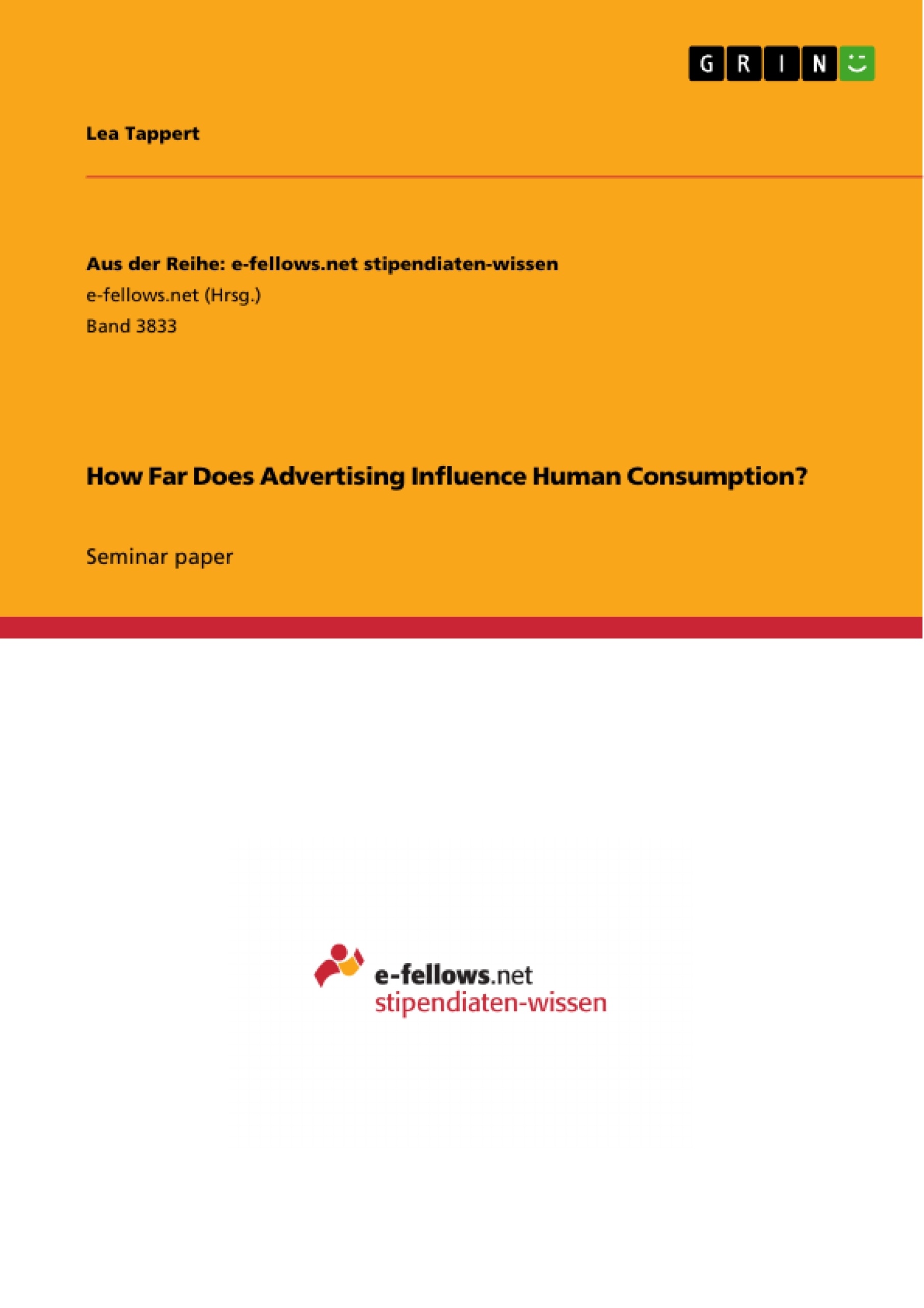The following work will deal with the topic of commercial influence towards the consumer by using different strategies in different types of media. The AIDA strategy works consciously. Its aim is to make the customer pay attention to the advertisement, to make them feel involved and to develop a wish for the product.
Using repetitions, emotions and addressing a community are strategies that work subconsciously. Repetitions stay in mind for a longer time and connect the advertisement to a picture of the brand. Emotions are created by leading through a story and making the consumer feel good to create a positive emotion about the product, too. Using the community works with the help of idols and with the opinion of the majority of people to make the consumer follow a certain sense of belonging. The strategies are types of communication because the supplier sends a message through an advertisement to the consumer who shows a reaction to the advertisement.
Digital advertising is the future if advertising. Search engines, Social Media Channels and video platforms are used to advertise because people spend more time on their mobile phone than on a desktop, watching TV or listing to the radio. For the suppliers, it is easy to collect personal date online. Using the personal data, they create personalized advertisements to offer more successful advertisements by knowing the consumer’s wishes better. That means, the consumer has to pay attention to be less influenced by all these strategies.
Table of Contents
- Introduction
- Strategies
- Direct strategy
- Indirect strategies
- Repetitions
- Emotions
- Community
- Internet media used for advertising
- Search engines
- Social Media
- Snapchat
- Messengers
- Video Advertising
- Influence of advertisements
- Conclusion
- Bibliography
Objectives and Key Themes
This report aims to explore the impact of advertising on consumer behavior, examining various strategies used to create effective and successful advertisements. It delves into both conscious and subconscious approaches to influencing consumers, analyzing the role of media in delivering advertising messages.
- Advertising strategies targeting conscious and subconscious consumer behavior
- The role of media in delivering advertising messages
- The use of personal data in creating personalized advertisements
- The influence of advertising on consumer consumption and decision-making
- The ethical implications of advertising strategies and the potential for manipulation
Chapter Summaries
- Introduction: The chapter introduces the topic of advertising and its pervasive presence in modern society. It highlights the focus on advertising targeting younger generations, particularly through internet media. The chapter sets the stage for exploring advertising strategies and their impact on consumer behavior.
- Strategies: This chapter explores two main categories of advertising strategies: direct and indirect. Direct strategies aim to attract conscious attention, with the AIDA model as a prime example. The chapter also delves into the use of slogans and their various communicative functions. Indirect strategies, on the other hand, focus on subconscious influence through techniques like repetition, emotional appeals, and the creation of community.
- Internet media used for advertising: This chapter examines various internet platforms used for advertising, including search engines, social media channels (Snapchat, Instagram, and messengers), and video advertising. It highlights the growing importance of digital advertising and the opportunities for collecting and using personal data to personalize ad campaigns.
- Influence of advertisements: This chapter delves into the complex relationship between advertising and consumer behavior, examining how advertising influences consumption patterns and decision-making. It explores the ethical implications of using various advertising strategies and the potential for manipulation.
Keywords
The report primarily focuses on advertising strategies, consumer behavior, digital media, personal data, influence, manipulation, ethical implications, and the AIDA model. These concepts are explored within the context of advertising's impact on human consumption.
- Quote paper
- Lea Tappert (Author), 2018, How Far Does Advertising Influence Human Consumption?, Munich, GRIN Verlag, https://www.grin.com/document/1033812



